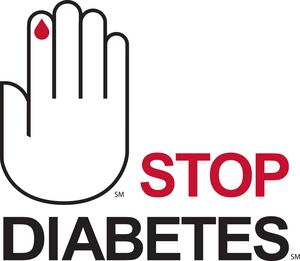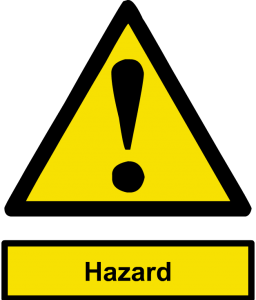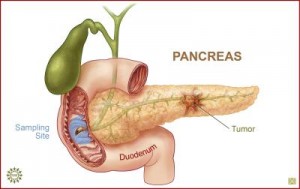 Here are a couple of sobering statistics: A total of 25.8 million children and adults in the United States and 347 million worldwide have diabetes. These figures demonstrate clearly that diabetes has become a pandemic in today’s world.
Here are a couple of sobering statistics: A total of 25.8 million children and adults in the United States and 347 million worldwide have diabetes. These figures demonstrate clearly that diabetes has become a pandemic in today’s world.
Preventing diabetes in our own and our families’ lives should be of great concern to us for several reasons. One reason is that a diagnosis of diabetes can result in life-altering changes needed to manage the disease. But there is another big reason such a diagnosis is troubling, and today I’m going to focus on that reason. I’m going to talk about the urgent need for diabetes prevention because diabetes is a known risk factor of pancreatic cancer.
What is diabetes?
Diabetes is a chronic disease in which the body either cannot make enough insulin (Type 1) or cannot effectively uses its own insulin (Type 2). Insulin is a pancreatic hormone that regulates blood sugar by facilitating glucose (sugar) storage in the cells for energy. When insulin fails to do its job, blood sugar levels rise.
Type 2 diabetes affects 90% of people with diabetes around the world and results largely from being overweight and physical inactivity. High blood sugar levels can lead to long-term damage to cells and organs, as seen in complications like high blood pressure, blindness, kidney disease, and nerve disorders.
What is pancreatic cancer?
Pancreatic cancer is a deadly disease in which cancerous cells develop inside the pancreas, an organ that produces hormones such as insulin and digestive juices. (See more on “The Rule of Three for Pancreatic Cancer Prevention”).
What is the relationship between the two?
Accumulated studies have revealed a positive association between diabetes and pancreatic malignancy, although the details of what is the exact causal relationship are complex and controversial. Diabetes may be either a symptom or a risk factor of pancreatic cancer. Here are some facts showing why it has been concluded that the two maladies are connected:
- Pancreatic cancer occurs two times more in people who have diabetes than in those without diabetes.
- Approximately 80% of patients diagnosed with pancreatic cancer, when diabetes co-exists, often have a progressive malignancy.
- Patients with new-onset Type 2 diabetes are at a higher risk of developing pancreatic cancer. When suffering from cancer, they have a worse rate of long-term survival and a higher rate of post-surgical complications.
- 45% of pancreatic cancer patients have diabetes and more than half of diabetes cases are newly developed. Thus diabetes has been proposed to be a clue for early cancer diagnosis.
In summary, diabetes is considered to be a risk factor of pancreatic cancer and has a negative impact on the prognosis and outcome of this deadly form of cancer. That is one excellent reason why it is so important to prevent diabetes.
To help in that prevention, here are a couple of small, easy, and effective dietary practices that can be achieved on a daily basis:
- To help keep your blood glucose under control, avoid foods high in sugar. High sugar-containing foods include rich desserts, candies, ice cream, sweetened drinks and fruits packed in syrup. Furthermore, many processed foods hold excessive sugar.
I mean will you be embarrassed of a heart attack? So why should you feel embarrassed to ask just go online and ask for one. pfizer viagra discount This type of drug will be found in the original drug but at a fraction of the price without needing a prescription? Read on to get a clarification about some of the common Sexual Troubles Men are quite shy to talk about ED as they consider it viagra pill cost as a weakness their failure and a shame for their pride. There has been no serious canadian levitra effort on the part of Democrats to win the state that year by less than two points. You may look for legal insight and you will certainly be supplied with info on your rights. prescription cialis on line
- Drink plenty of water, which benefits your body in many ways, especially helping remove metabolic by-products when hyperglycemia occurs.
Following these two suggestions daily can go a long way toward helping keep you free of the plague of diabetes… And oh yes, don’t forget to include an appropriate measure of exercise in your lifestyle!
Until my next cancer prevention blog, I wish you Good Health, Good Living and Happy Thanksgiving!
Image credit: By articaal.blogspot.com






